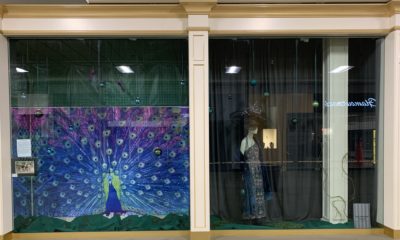IF YOU’VE NOTICED, malls haven’t been doing great for a while here in the U.S. The writing was on the walls arguably in the late ’90s, and the majority of enclosed malls ceased being built in 2006 with a few exceptions. There are many reasons: Oversaturation and malls being built too close together, downtown shopping regaining its appeal, localization of shopping habits, department store woes, and so on.
But now, another factor has been heaped onto the pile: The fallout from the coronavirus.
In my last blog, I briefly touched on how malls were responding to the pandemic toward the beginning of the crisis. Some, like Mall of America, temporarily shut their doors altogether, while others remained open for mall walkers as many of the retailers housed within were temporarily shuttered. The U.S. is still seeing spikes in various states, and therefore, it’s a mix across the board regarding which properties are moving ahead with reopening plans or delaying them. Either way, malls are poised to take a major hit across the board, with many analysts claiming their ultimate demise is right around the corner.
Green Street Advisors (Newport Beach, Calif.) told CNBC that more than half of department stores – many coveted mall anchors – will be permanently closed by the end of the year. Department stores, according to Green Street, still represent 60 percent of current mall anchor space. If the predictions ring true, this is especially bad for malls.
Anchors are critical – in the past, Dillard’s, Bon-Ton, Elder-Beerman, Sears and the like, would help draw thousands of customers through mall corridors. They were “anchored” on all sides so customers were encouraged to explore the retailers in between. Now we usually see one of two scenarios: a mall with only a few anchors and a sprinkle of (mostly mom-and-pop) stores in between; or properties where the anchors have vacated and only a few stalwarts on the interior remain. Of course you have outliers like luxury malls that do a great job of keeping up occupancy. But your regular, B or C-level neighborhood mall, I can almost guarantee, falls into one of those two examples.
Other analysts believe more than a third of malls could be completely lost after the pandemic ends. Jan Kniffen, a retail consultant who previously worked as an executive for The May Department Stores, which was bought by Macy’s in 2005, said he truly believes 33 percent of America’s malls will “go dark” by next year – previously he made the prediction for 2030, according to CNBC.
Advertisement
How can this be stopped? How can it be fixed?
In my years in the industry, I’ve heard a lot of great ideas for salvaging malls and even seen some theories put into action – adding farmer’s markets or local holiday markets for a temporary time; creating experiences beyond retail; rotating e-commerce brands out of storefronts to expose them to the public; turning them into mixed-use centers with offices and non-retail attractions; repurpose them into convention centers, concert halls, entertainment venues, apartments or hotels.
There are many reasons why many of these concepts haven’t come to fruition, but a big part comes down to money. It takes a lot to overhaul these behemoth spaces, even for just a simple facelift (think: a “facelift” for a 1.5-million-square-foot aging space). And some mall developers, like Chattanooga, Tenn.-based CBL Properties, are facing potential bankruptcy due to skipped rent payments.
And then we have the virus on top of all that, which creates yet another issue with social distancing measures. Nathaniel Meyersohn, a CNN retail reporter, said during an on-air interview with WBUR, “[The] mall environment is going to be incredibly unusual. You know, we’ll have social distancing markers everywhere; plexiglass at cashiers; play areas will be shut down, the common areas of the mall will be shut down. So I think it’s kind of the first big test of this new retail environment that we’re in. You know, these malls and department stores, they play up the experience at these places. Are people going to be looking to be roaming around stores right now, browsing aisles, trying on clothes, you know, leisurely activities? I think there’s a lot of uncertainty, and we’re going to see how it plays out.”
With so many unknowns, like most retail, malls will have to continue to hang in the balance until things begin to return to “normal,” and then maybe we’ll have a clearer picture. Or will they even exist when this is all over? Only time will tell.

 Photo Gallery1 week ago
Photo Gallery1 week ago
 Headlines4 days ago
Headlines4 days ago
 Headlines1 week ago
Headlines1 week ago
 Headlines2 weeks ago
Headlines2 weeks ago
 Headlines1 week ago
Headlines1 week ago
 Designer Dozen1 week ago
Designer Dozen1 week ago
 Headlines1 week ago
Headlines1 week ago
 Headlines1 week ago
Headlines1 week ago



















